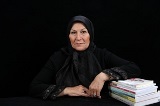A Study of Women's Cultural Representation in the Field of Mental Disorders in the Nineties of Iranian Cinema: Discourse Analysis Method, Padam Approach
Keywords:
Women's Mental Disorders, Iranian Cinema of the Nineties, Discourse Analysis, Padam, Representation.Abstract
Aim: Women and their issues have received more media attention in recent years. Also, considering the issue of "mental disorders in women", as a multifaceted phenomenon and a socio-cultural issue, is one of the most challenging issues in cinema and television; Therefore, the present article intends to extract the cultural approach represented in the films of the nineties of Iranian cinema from the existing discourses in this field. Method: The method used for cultural representation of mental disorders in this study is discourse analysis with "PDAM" approach. Results: The results of this analysis show that directors for characters with mental disorders in their films have common characteristics such as weak, helpless and helpless women, unusual behavior, distrust of others and the inability to interact healthy and They have also chosen a kind of loneliness and isolation from society as cultural characteristics to represent. Conclusion: The subject of "mental disorder in women" is portrayed as the main discourse of the films in order to portray women as more vulnerable in today's Iranian society. This dominant discourse is in line with the psychotherapeutic theory of feminism.
Downloads
Downloads
Published
Issue
Section
License

This work is licensed under a Creative Commons Attribution-NonCommercial 4.0 International License.






















